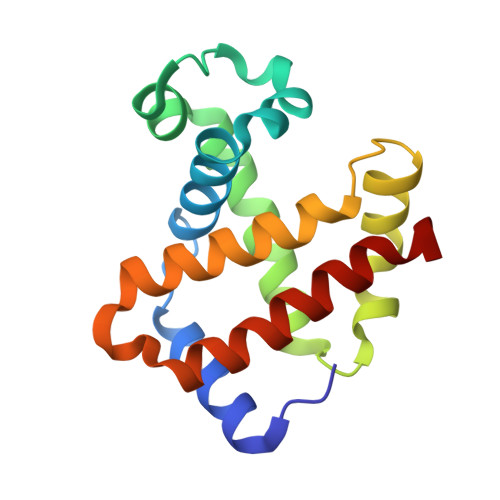Crystallographic characterization of the nitric oxide derivative of R-state human hemoglobin.
Yi, J., Soares, A.S., Richter-Addo, G.B.(2014) Nitric Oxide 39: 46-50
- PubMed: 24769418
- DOI: https://doi.org/10.1016/j.niox.2014.04.001
- Primary Citation of Related Structures:
4N8T - PubMed Abstract:
Nitric oxide (NO) is a signaling agent that is biosynthesized in vivo. NO binds to the heme center in human hemoglobin (Hb) to form the HbNO adduct. This reaction of NO with Hb has been studied for many decades. Of continued interest has been the effect that the bound NO ligand has on the geometrical parameters of the resulting heme-NO active site. Although the crystal structure of a T-state human HbNO complex has been published previously, that of the high affinity R-state HbNO derivative has not been reported to date. We have crystallized and solved the three-dimensional X-ray structure of R-state human HbNO to 1.90 Å resolution. The differences in the FeNO bond parameters and H-bonding patterns between the α and β subunits contribute to understanding of the observed enhanced stability of the α(FeNO) moieties relative to the β(FeNO) moieties in human R-state HbNO.
Organizational Affiliation:
Department of Chemistry and Biochemistry, University of Oklahoma, 101 Stephenson Parkway, Norman, OK 73019, USA; Department of Biological Engineering, Nanjing University of Science and Technology, Nanjing 210094, China.



















